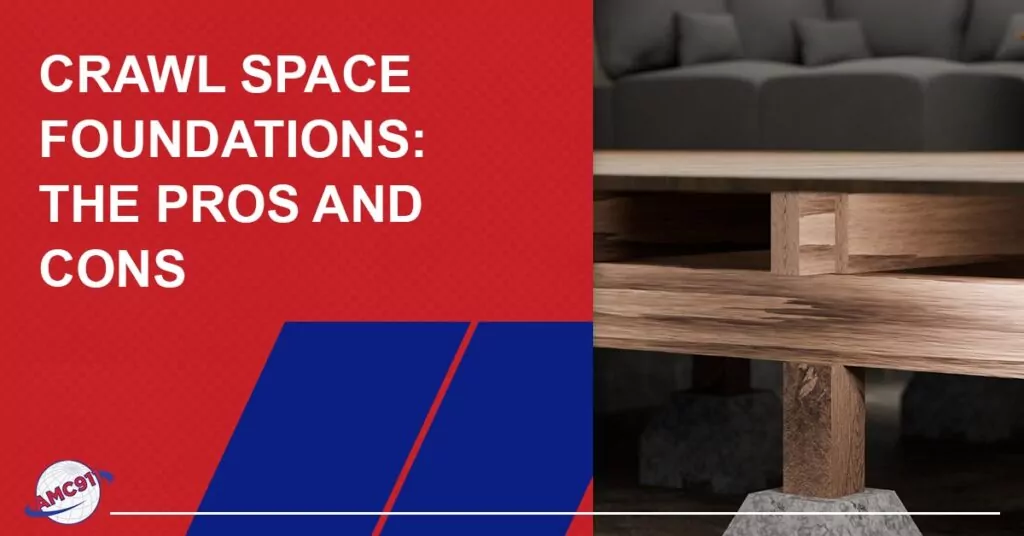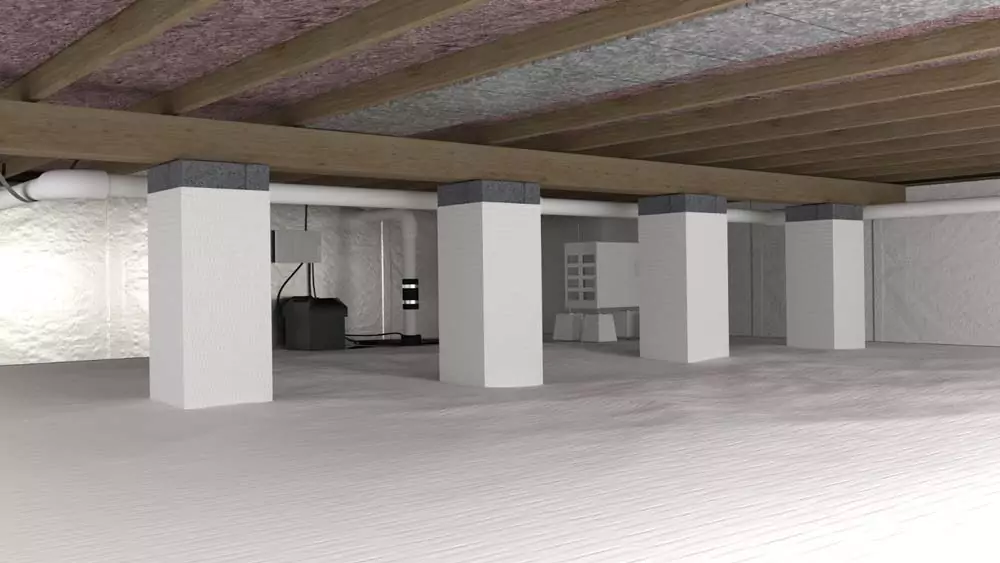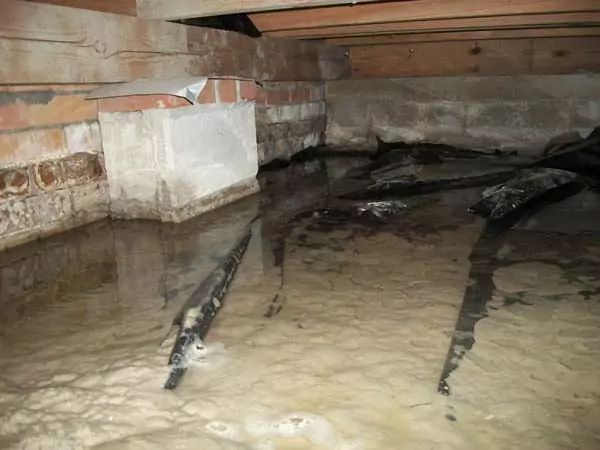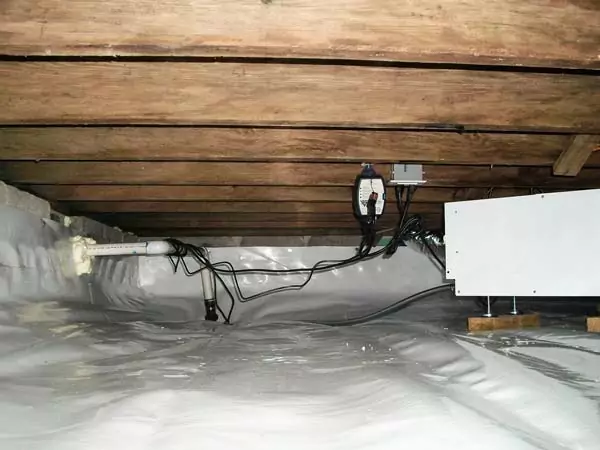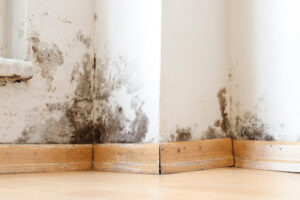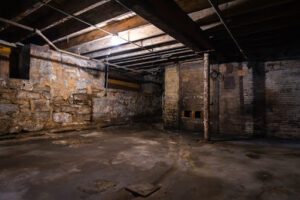Crawl Space foundations, a common choice in many American homes, represent a middle ground between slab foundations and full basements. These openings, ranging on average from one to three feet in height, provide a buffer between the home and the ground. They offer various advantages but also pose particular challenges; hence, understanding both sides is important for homeowners and builders alike. We will guide you here through the intricacies of crawl space foundations, providing clarity on whether this foundation type suits your needs.
What Is A Crawl Space Foundation?
Typically constructed using cinder blocks or poured concrete, crawlspaces are a mid-road solution between the generally more affordable slab foundations and the costlier full basements.
A crawlspace foundation elevates the house off the ground, creating a small, accessible area beneath the home. This space, usually ventilated to the outside air, supports the house’s structure and provides a convenient location for plumbing, electrical wiring, and HVAC systems.
Should You Choose A Crawl Space Foundation?
Suitable Conditions For Crawl Space Foundations
Crawl Space foundations are particularly well-suited for regions with sloping terrain and moderate climates.
On sloped lots, crawlspaces can provide a level platform for the home, making construction easier and more cost-effective. They are also beneficial in areas with well-draining soils, such as sandy or loamy, which help prevent water accumulation and moisture-related issues.
In regions with moderate climates, crawl space foundations can offer an optimal balance between cost and functionality. The elevation they provide helps protect against moderate flooding and keeps the home’s structure insulated from the ground’s dampness. Additionally, areas with a high water table or frequent rain benefit from the raised design, reducing the risk of water intrusion.
Less Suitable Conditions For Crawl Space Foundations
Crawl Space foundations are less recommended in areas with unstable soil, such as clay-heavy regions.
Clay soils can expand and contract significantly with moisture changes. In return, you might face foundation movement and potential structural damage.
Regions prone to extreme weather conditions, such as very hot or cold climates, also pose challenges for crawl space foundations. In hot environments, maintaining a cool temperature in the crawl space can be difficult without significant insulation and ventilation efforts. Similarly, crawl spaces might contribute to heat loss in cold areas if not properly insulated, leading to higher energy consumption.
Additionally, areas with high seismic activity are not ideal for crawl space foundations. The elevated structure may be more susceptible to movement during earthquakes, increasing the risk of foundation cracks or shifts. In such regions, slab foundations or other seismic-resistant designs are preferable to ensure stability and safety.
The Pros Of Crawl Space Foundations
Protection From Moisture And Flooding
Imagine the peace of mind that comes with knowing your home is safeguarded from heavy rainfall or unexpected flooding. Crawl Space foundations provide this very assurance through their specific design.
The fact that your home is elevated means it remains dry, drastically reducing the risk of water damage and the insidious growth of mold. In regions where flooding is common, this protective barrier is not just a benefit; it’s a necessity.
Access To Utilities
Now, let’s talk about the convenience of having all your essential utilities—plumbing, electrical wiring, HVAC systems—all easily accessible without major disruptions. Crawl space foundations offer this advantage as well.
When a plumbing issue arises, or your heating system needs maintenance, the crawl space foundation provides straightforward access, saving you from the chaos of tearing up floors or drilling through concrete slabs. That way, it not only simplifies repairs but also reduces costs significantly.
Cost-Effectiveness
Budget-conscious homeowners will appreciate the balance that crawl space foundations strike between functionality and cost.
Building a full basement involves extensive excavation and construction. Substantial expenses, in other words. Crawl space foundations, however, deliver many of the same benefits—such as elevated living space and easy utility access—at a fraction of the cost. This makes them an attractive option if you’re looking to maximize your investment without compromising on essential features.
Pest Control
By elevating your home with a crawl space foundation, you create a significant barrier against termites, ants, rodents, and other destructive pests. It reduces their access points, making it inherently more difficult for them to enter your living space. Additionally, the separation between the house and the ground acts as a physical deterrent, significantly reducing the likelihood of pests establishing colonies within your walls.
Crawl Spaces also offer a distinct advantage when it comes to treatment. Unlike slab foundations, where pest control can be cumbersome, crawlspaces allow for a straightforward approach where treatments can be applied more effectively.
The Disadvantages Of Crawl Space Foundations
Moisture And Humidity Concerns
While elevation helps protect against flooding, crawl spaces remain prone to moisture and humidity issues. Poor ventilation or inadequate drainage typically lead to damp conditions, which promote mold growth or wood rot.
Solution: You must ensure proper ventilation and waterproofing measures to mitigate these risks. Regular inspections and maintenance are crucial to keeping the crawl space dry and healthy.
Energy Efficiency Challenges
Crawl space foundations can present challenges in maintaining energy efficiency. Without proper insulation, these spaces can contribute to heat loss in winter and heat gain in summer. This inefficiency can lead to higher energy bills and uncomfortable living conditions.
Solution: Appropriate insulation and sealing air leaks can help you improve energy efficiency and make the home more comfortable year-round.
Structural Vulnerability
In areas prone to earthquakes or soil instability, crawl space foundations can be more vulnerable to structural damage compared to slab foundations. The elevated structure may experience greater movement during seismic activity, increasing the risk of foundation cracks or shifts.
Solution: Consider additional reinforcement or alternative foundation types to ensure stability and safety.
Maintenance Requirements
Crawl spaces require regular maintenance to address potential issues like moisture, pests, and structural integrity. While not overly burdensome, consistent attention is advised to prevent minor problems from escalating into significant concerns. The upkeep involves:
- Inspecting for water leaks
- Checking for signs of pest activity
- Ensuring proper ventilation
Crawl Space Foundation Best Practices
Proper Ventilation
Adequate ventilation prevents moisture buildup in crawl spaces. Installing vents along the perimeter can help promote air circulation and reduce humidity levels.
However, you need to balance that with insulation to maintain energy efficiency. In some cases, a vapor barrier on the ground and walls can further protect against moisture.
Insulation And Air Sealing
Proper insulation is key to the energy efficiency of crawl space foundations. Insulating walls and floors means investing in consistent indoor temperatures and lower energy costs.
Additionally, sealing air leaks around vents, doors, and other openings can prevent drafts, hence improving overall comfort. Use high-quality insulation materials and professional installation to ensure optimal performance.
Moisture Management
Install a sump pump to remove excess water in case of flooding or leaks. Slope the ground away from the foundation, and use downspouts to direct water, preventing it from entering the crawlspace.
Regularly check for and immediately address any signs of water intrusion.
Pest Prevention
Preventing pests from entering the crawlspace requires a combination of physical barriers and regular maintenance. Seal cracks and gaps in the foundation and install mesh screens over vents.
Regular inspections and treatments by pest control professionals can further protect the home from infestations.
Wrapping Up
Crawl space foundations offer a practical solution for many homeowners, balancing cost, accessibility, and protection against certain environmental factors. While they come with their own set of pros and cons, with proper knowledge and regular maintenance you can mitigate most issues, ensuring a healthy and functional space beneath your home.
If you need assistance with your existing crawl space foundation, request a quote today and let our experts guide you through the process. Contact us for more information and personalized support.

